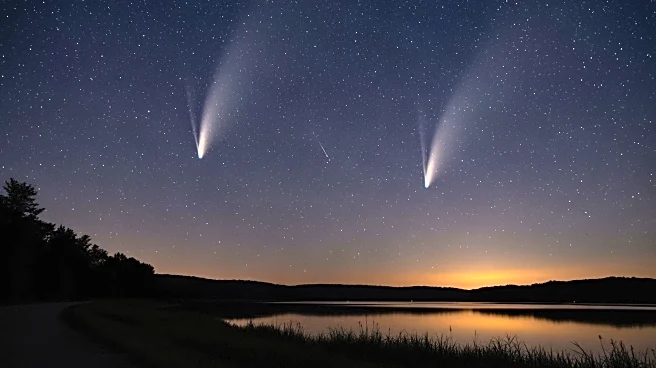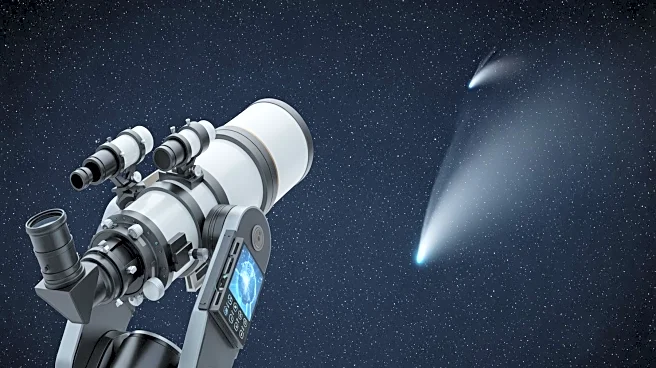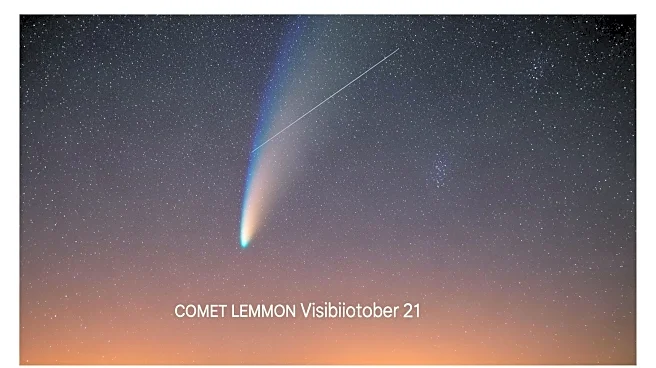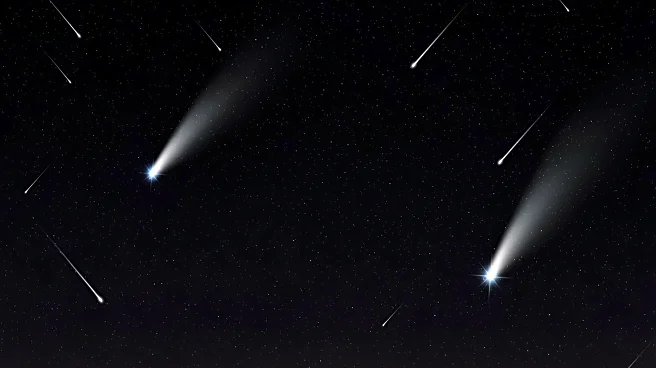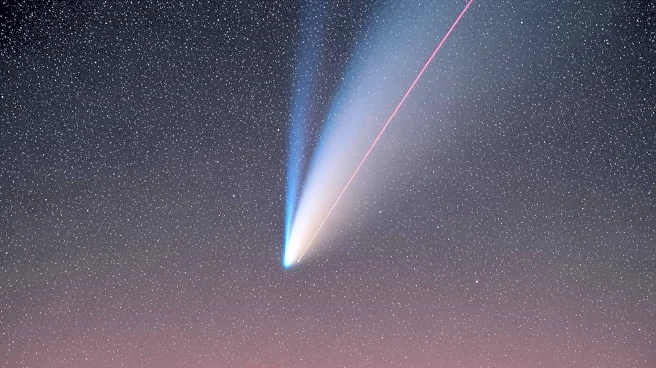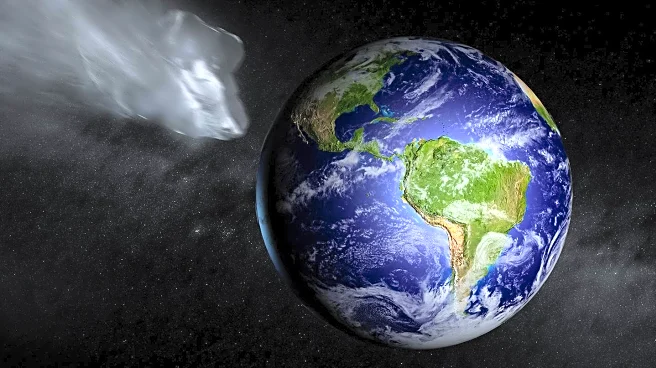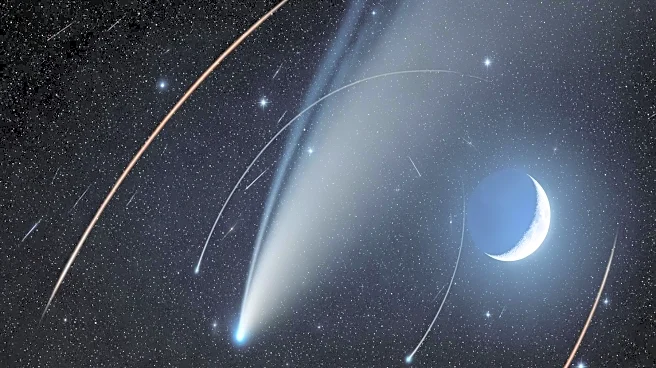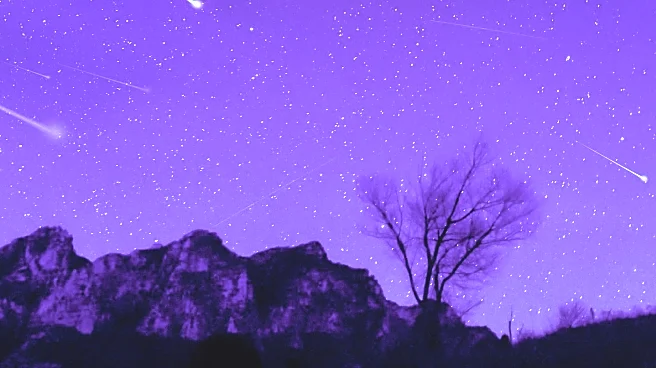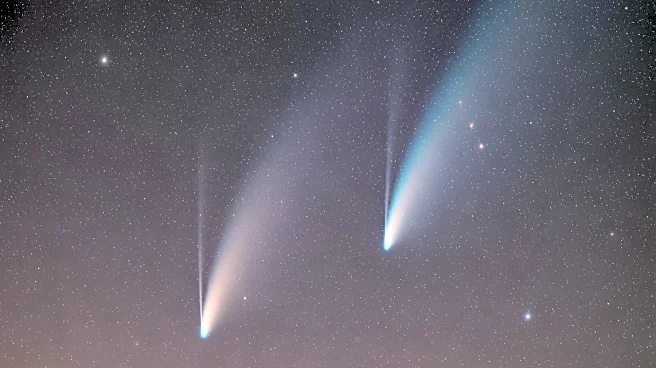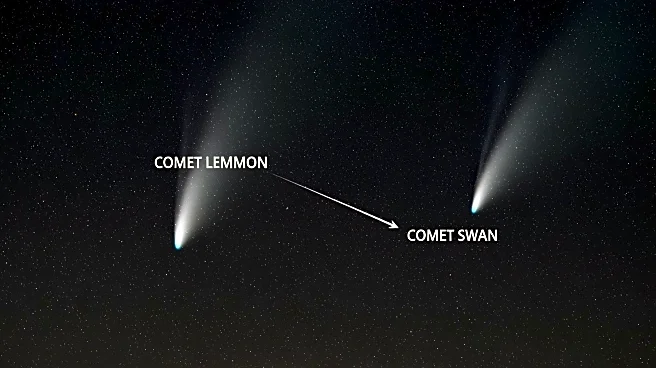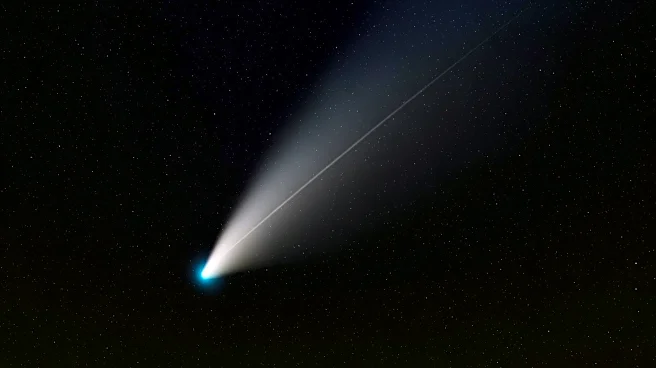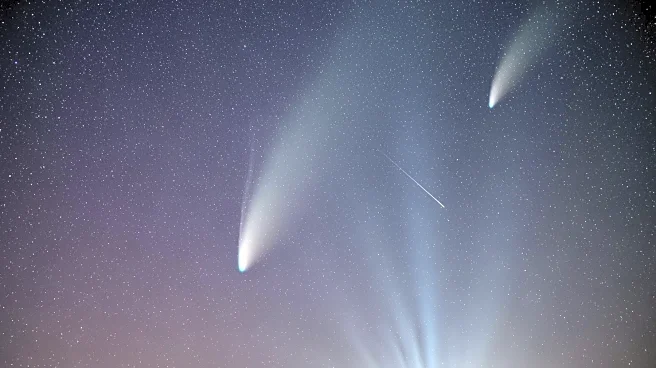What's Happening?
Comets SWAN and Lemmon are making a rare double appearance in the night sky, reaching their closest points to Earth. Comet SWAN, visible primarily in the Southern Hemisphere, reached its closest point on October 20, while Comet Lemmon, visible in the Northern
Hemisphere, is closest on October 21. Both comets were discovered this year and are part of long orbital cycles around the sun. Comet Lemmon is brighter and can be seen with the naked eye, whereas Comet SWAN requires binoculars or a telescope for viewing. Michigan residents are encouraged to visit dark sky parks for optimal viewing conditions.
Why It's Important?
The visibility of Comets SWAN and Lemmon offers a unique opportunity for public engagement with astronomy, potentially inspiring educational activities and community events centered around stargazing. The event highlights the importance of preserving dark sky areas, which are crucial for observing celestial phenomena without light pollution. For scientists, the comets provide valuable data for studying cometary behavior and characteristics, contributing to our understanding of the solar system. The event also underscores the significance of international collaboration in tracking and studying celestial objects.
What's Next?
As the comets continue their journey, they will remain visible until early November, with peak brightness expected around October 31 to November 2. Stargazers are advised to monitor weather conditions for clear skies and plan viewing sessions accordingly. Astronomy enthusiasts may organize events or workshops to educate the public about cometary science and the significance of such celestial events. Observatories and science centers might also offer special programs or viewing nights to engage the community.
Beyond the Headlines
The appearance of these comets underscores the dynamic nature of our solar system and the ongoing discoveries made possible by advancements in astronomical technology. It also raises awareness about the importance of space exploration and the potential for future missions to study comets up close. The event may spark discussions about the preservation of natural night skies and the impact of urban development on astronomical observations.
